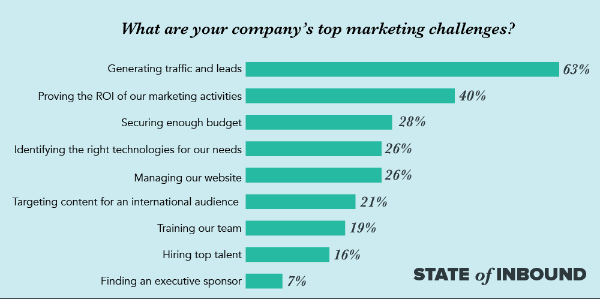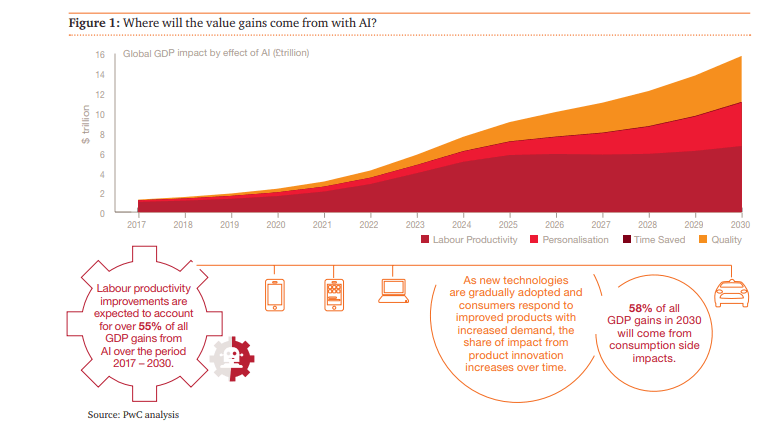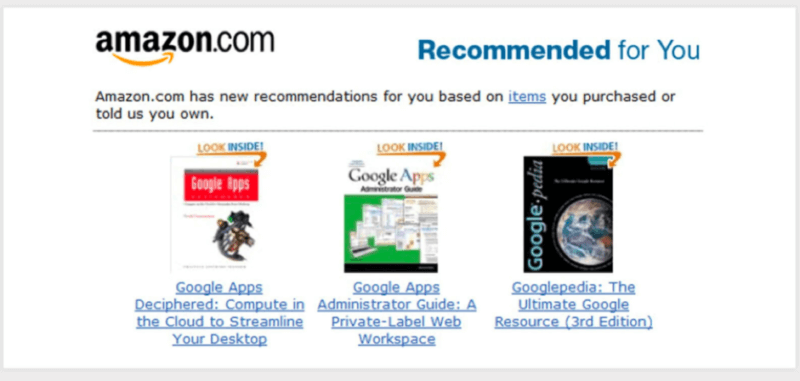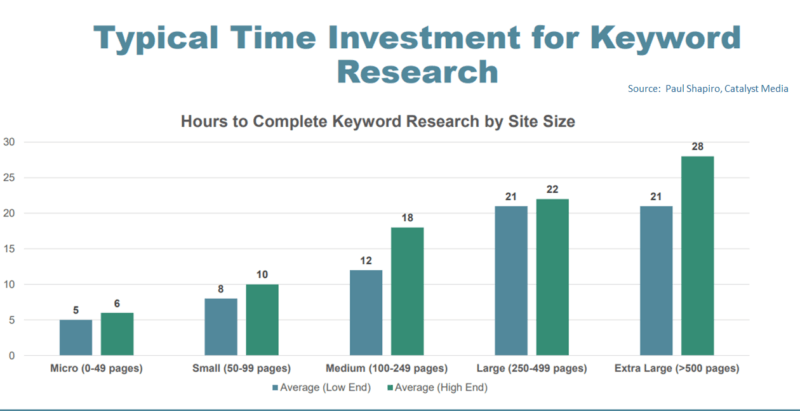If your brand can’t afford full-suite SEO services, the thought of executing certain SEO practices may seem daunting. You know that it’s going to take a lot of effort and time to implement an effective SEO strategy.
There is an abundance of information on the web that can help you craft an effective SEO strategy. But when it comes to executing that strategy, it’s very easy to get stressed out and overwhelmed about the amount of work that must be done to yield positive results.
A recent HubSpot survey showed that the biggest challenge of website owners was related to how to drive more traffic to their sites.

Keep in mind that SEO success is strongly linked to how much work you put in. If you want to publish a buzz-worthy post, you have to spend a lot of time researching, writing and editing it to perfection. If you want backlinks from authoritative pages, you must spend a lot of time sending out personal, authentic outreach emails.
So, what can you do to make your optimization tasks simpler and run more efficiently? Consider implementing automation.
According to a Salesforce survey taken in 2017 about automation, 67% of marketing decision makers use marketing automation and it was predicted that in two years an additional 21% would join in. Various SEO tasks such as social signals monitoring, blogger outreach, and link-building can now easily be automated with the proper tools. Effectively automating your SEO tasks will allow you to cut down on the amount of time spent on redundant tasks.
Recent research shows that artificial intelligence (AI) is a major component of automation that is expected to add $15.7 trillion annually to the global GDP by 2030.
This shows the power of what AI can do.

Automation alone won’t shoot your website to the top of Google, but it can help you boost your results. This allows you to spend your resources on other aspects of optimization.
There are three major areas where automation can be used to massively benefit your site’s SEO, which includes: insights, implementation, and time.
Let’s look at them in-depth:
1. Insights
Insight deals with all the information you need to properly optimize your website.
i). Use AI Automation to Facilitate Content Optimization
Automation can help to optimize your content strategy and artificial intelligence (AI) can lift some of the load by asking and answering critical customer questions maybe even better than you could on your own using the traditional strategy.
Users are interested in content that answers their questions concerning a product, service or brand. If your content is optimized to answer these questions perfectly, the users will become interested and even be tempted to share it with other people.
Fortunately, there are many automated tools available that can do the necessary analysis and answer these vital questions that consumers ask. If you then incorporate these answers into your content, users will have a better experience on your website.
Artificial intelligence can analyze your website traffic, social media behavior, and email interactions of your users. In analyzing the results, AI can help define a detailed profile of your target audience and what their interests are.
AI provides insight about your visitors that you can then use to your advantage. Instead of making decisions based on assumptions and hoping that your shot in the dark works out, AI helps you make educated predictions based on solid data and tracked engagement. These insights allow you to optimize your content strategy and produce high-quality content, which will most likely rank high in search engines.
Gone are the days when human beings had to do all the work as artificial intelligence begins to prove its worth in creating high-quality readable content. New software is continuously being developed to help improve the quality of content you write.
For example, Grammarly is an automated software that you can use to correct spelling and grammatical errors in your content. Some of these errors may be hard to point out on your own, but the Grammarly software enables you to see these errors and correct them so that you won’t feed your audience poor-quality content. The quality of your content is a big factor that determines your ranking on search engines.
ii). In-depth Page Analysis
SEO analysis can be complex and include many different elements, which can be overwhelming. There’s a lot of information to review and approve. Luckily, there are now numerous tools that you can now use to conduct a fast analysis of your webpages.
The Yoast SEO plugin is a great example because not only does it identify on-page SEO problems it also shows you the proper steps you need to take in order to solve or handle them. If you’re searching for a more in-depth investigation of your website’s SEO, inclusive of off-page aspects like your pages backlink profile, then a free tool for audit such as SEOptimer is also available.
All that it requires is for you to put in your website’s URL in the empty field and hit on “Analyze”. After quickly combing through your website, SEOptimer will provide results containing a vast array of data, which allows you to get a broader understanding of aspects like loading speed, usability, social signals, etc.
Using one of these tools allows you to perform a quality SEO audit on your site very quickly to make sure that your optimizing your website as much as possible.
iii). Research
Always remember that the success of certain advanced SEO techniques, like link-building, is dependent on a qualitative research strategy. And this involves 3 aspects:
- Finding influencers interested in your brand
- Quality content
- Outreach emails
Carrying out content research using an automation tool like Buzzsumo is a great way to find new topic ideas and well-known publishers with a powerful online reach.
However, Buzzsumo’s influencer research capability is limited to just searching Twitter, which is a huge limitation if you’re trying to launch a broad outreach campaign.
Sure, you’ll see the big gun influencers on Twitter, but the odds of getting their attention are little. Except of course if you have a social reach that’s on par with theirs. So instead of “cold emailing” the influencers you’re aiming for, a better approach would be to search out those who have previously declared an interest in what your brand does.
To accomplish this, utilize certain social listening tools such as SentiOne to locate content publishers and bloggers who already know your brand. Much like Google’s news alerts, it does this by notifying you when anyone mentions or talks about your brand, regardless of it’s on social media, forum sites, or even mentions on your own website. The power this provides your SEO goals is immense because it’s like the ultimate word of mouth on the web.
2. Implementations
Implementation is an important piece as it relates to the direct tasks you need to carry out to receive insights.
i). AI Automation for hyper-personalization
There is an increased need for hyper-personalized recommendations and content as brands vie for more of the market share in their industry and consumers’ attention. Targeted content delivery is one of the most important impacts that automation has had on search engine optimization.
Artificial intelligence can be used to gain a better understanding of your audience and to identify the type of content that will interest them and keep them engaged with your website. Understanding what your audience needs and giving them exactly that improves your website’s user experience and your ranking in search engines.
For example, Amazon is a world leader in personalization through AI automation.
They’re able to show products that interest individual customers through their “Recommended for You” or “Customers-Also-Bought” features, which has led to many upsells. Visitors continue to come back to shop because they feel the website understands them and gives them what they want.

ii). Monitoring Backlinks and Identifying Profitable Keywords
When it comes to search engine optimization, searching for keywords and making changes in your site’s backlink profile can be extremely tedious.
Look at the graph below, which shows the amount of time it takes to carry out keyword research based on the size of your site:

It’s a tremendous amount of time, which makes it a perfect candidate for automation.
Unfortunately, there is no universal answer when it relates to employing the best optimization techniques. You must be open to trial and error methods in order to pinpoint which methods works for your brand and which ones don’t.
Using an automation tool such as SE Ranking can help shave off some hours from your monitoring duties through a unified dashboard. The dashboard allows you to monitor backlinks, social signals, keyword ranking and even insights regarding the strategies of your competitors, which can be very beneficial in setting SEO and marketing goals for your website.
It does this by first automatically generating a list of goals based on its initial analysis of your website and the target keywords you’ve chosen. What’s more? You can also broaden the to-do list by tapping on the “Add your own task” icon.
iii). Buzz Creation
Google is big on satisfying web users and the complementary Rankbrain tool helps you do it. As you may already know, in previous years you could get away with random link-building to prove your content is worth reading. But that’s not the case anymore.
Google is interested in the buzz your content creates on the web and social media networking is where a major bulk of this buzz occurs. So, without some sort of social media influence, your rankings will probably suffer.
This is critical for your off-site SEO. But in addition to its influence on SEO, it can also assist you in creating a massive following. You’ll be able to drive large amounts of traffic to your website, which exposes your content to niche experts, bloggers, and other influencers. This maximizes your content’s backlink potential.
You’re probably thinking, how do I find time to share all this content to my social media channels? Luckily, you can use an automated scheduling tool, such as Buffer and then link it to your site through IFTTT.
Buffer is a tool that can be used to schedule posts across various networks. Plus, an amazing feature it has is its ability to share your content at the time when your audience is most likely to be active with your brand.
A tool like this saves you valuable time and reduces the stress of having to share every single post at random times and hope your audience is active during those times. This automation process effectively helps shift your focus to more technical aspects and leave the monotony of content sharing to technology.
3. Time and Resources
i). Automation makes SEO very fast and economical
Automated SEO allows you to easily handle tasks that are normally very tedious, like checking for broken links, getting current and accurate data on keyword ranking, analyzing competitor’s backlinks, analyzing keyword density, and performing a variety of other tedious tasks.
Automated SEO is faster and more efficient than trying to do everything manually. When components of your SEO campaign is automated, you won’t have to waste time on repetitive tasks, rather, everything automatically runs on its own.
Automation also enables you to reduce your workforce and labor costs. Instead of having many employees carrying out different tasks and risking a higher opportunity for mistakes, automation of such tasks can be a better alternative.
You may still need people to supervise the automated tasks, but it will still take less time than doing everything manually. This helps you reduce the amount of money you spend to employ professionals. And rather than have a beehive of people moving back and forth doing the tasks, you can download the software or run programs that are built to automatically carry out the tasks.
Conclusion
Automated SEO is the use of semi or fully automated platforms or software that can implement SEO strategies and reduce your workload.
Automation has proven to be an indispensable advancement in the SEO world and a lot of websites are cashing in on it. You can do the same by implementing the tips listed in this article.
Want your website to rank higher on Google? Not sure where to start? The Cardinal Digital Marketing team is here for you; get in touch today!

